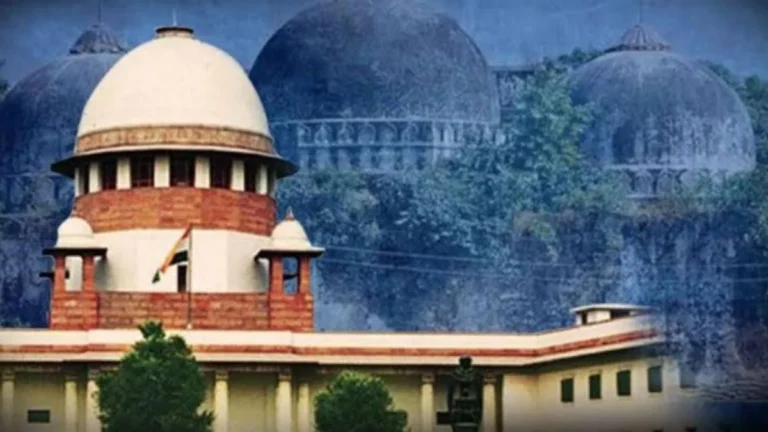In the heart of India, where history, culture, and religion intersect, the Ayodhya Ram Temple dispute stood as a testament to centuries-old tensions. The culmination of this longstanding debate came to a historic moment on November 9, 2019, when the Supreme Court of India delivered a landmark verdict, reshaping the narrative of Ayodhya and its sacred grounds.
Background: The Ayodhya Dispute
- Centuries of Controversy:
- Briefly recap the historical and religious roots of the Ayodhya dispute, dating back to the Mughal era and intensifying during the colonial period.
- Legal Battles:
- Highlight the legal battles that spanned several decades, involving conflicting claims from Hindu and Muslim communities over the ownership and usage of the disputed land.
The Supreme Court Verdict: A Pivotal Moment
- Legal Proceedings:
- Outline the sequence of legal proceedings leading up to the Supreme Court’s involvement, including the Allahabad High Court’s 2010 verdict that divided the disputed land among the three main parties involved.
- Supreme Court’s Intervention:
- Discuss the reasons for the Supreme Court’s intervention, considering the significance and sensitivity of the Ayodhya dispute.
Key Aspects of the Verdict:
- Land Division:
- Summarize the Supreme Court’s decision to allocate the disputed land for the construction of both a Ram Temple and a mosque. Explore the rationale behind this unique and inclusive approach.
- Rationale and Findings:
- Delve into the detailed findings of the Supreme Court, which included historical evidence, archaeological findings, and considerations of faith and belief. Discuss how the court balanced legal principles with cultural and religious sentiments.
- Trust Formation:
- Highlight the establishment of the Shri Ram Janmabhoomi Teerth Kshetra Trust, tasked with overseeing the construction of the Ram Temple. Discuss the significance of the trust in ensuring a smooth and collaborative process.
- National and International Responses:
- Explore the reactions from various sections of society, including political leaders, religious figures, and the general public. Discuss the international significance of the verdict.
- Impact on Religious Harmony:
- Analyze how the Supreme Court’s verdict aimed at fostering religious harmony and bridging communal divides, setting a precedent for peaceful resolution of religious disputes.
Construction of the Ram Temple: The Ongoing Journey
- Architectural Plans:
- Provide an update on the architectural plans for the Ram Temple, emphasizing the blend of tradition and modernity in the design.
- Construction Milestones:
- Highlight any significant milestones achieved in the construction process post the Supreme Court verdict.
Conclusion: A New Chapter Unfolds
The Supreme Court verdict of 2019 marked a pivotal moment in the Ayodhya Ram Temple dispute, steering the course of history towards resolution and reconciliation. As the construction of the Ram Temple continues, Ayodhya stands on the brink of a new chapter, one that embodies the principles of coexistence, harmony, and the shared heritage of a diverse nation.


